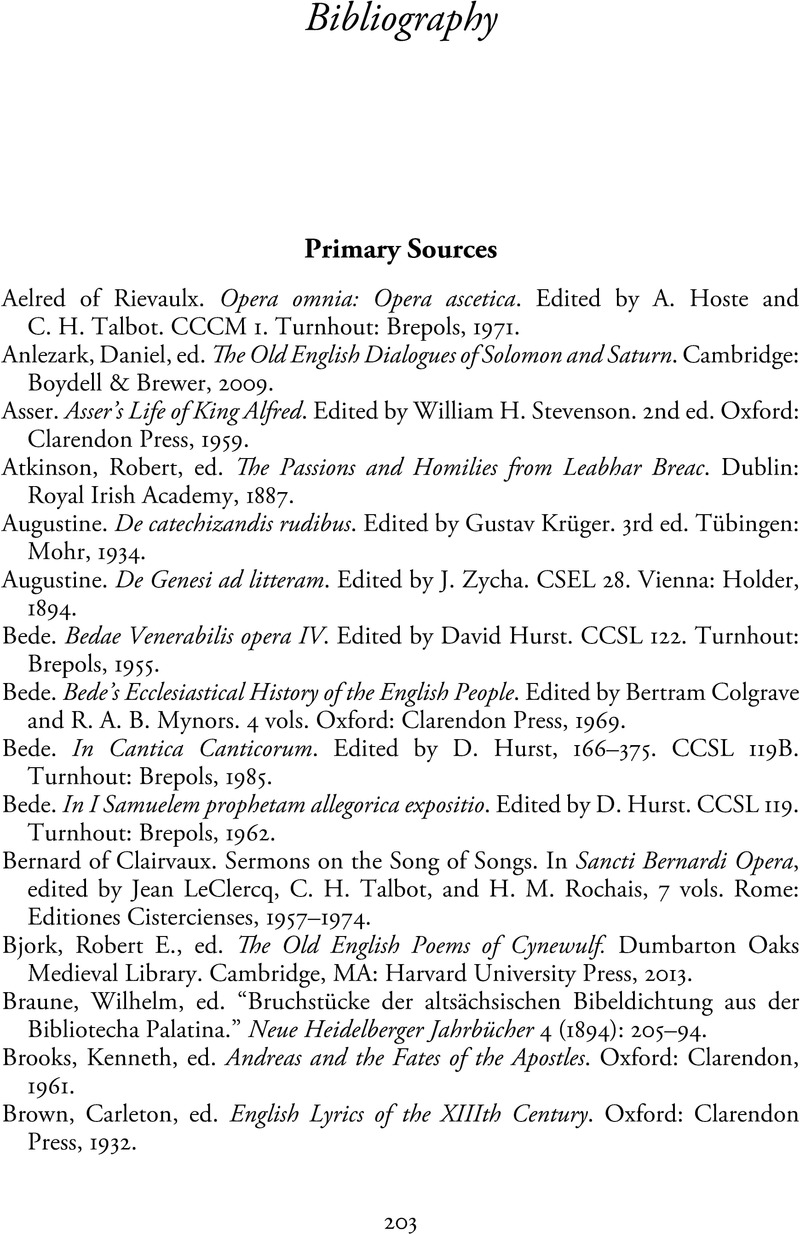Book contents
- Forms of Devotion in Early English Poetry
- Cambridge Studies in Medieval Literature
- Forms of Devotion in Early English Poetry
- Copyright page
- Contents
- Acknowledgments
- Abbreviations
- Introduction
- 1 Displaced Passions
- 2 Paradise and the Problem of Beauty in Old English Poetry
- 3 Poetics at the End of the World
- 4 The Poetics of the Speaking Soul from Old to Middle English
- 5 Luue and Lyric in England across the Conquest
- Epilogue
- Notes
- Bibliography
- Index
- Cambridge Studies in Medieval Literature
- References
Bibliography
Published online by Cambridge University Press: 19 October 2023
- Forms of Devotion in Early English Poetry
- Cambridge Studies in Medieval Literature
- Forms of Devotion in Early English Poetry
- Copyright page
- Contents
- Acknowledgments
- Abbreviations
- Introduction
- 1 Displaced Passions
- 2 Paradise and the Problem of Beauty in Old English Poetry
- 3 Poetics at the End of the World
- 4 The Poetics of the Speaking Soul from Old to Middle English
- 5 Luue and Lyric in England across the Conquest
- Epilogue
- Notes
- Bibliography
- Index
- Cambridge Studies in Medieval Literature
- References
Summary

- Type
- Chapter
- Information
- Forms of Devotion in Early English PoetryThe Poetics of Feeling, pp. 203 - 221Publisher: Cambridge University PressPrint publication year: 2023

